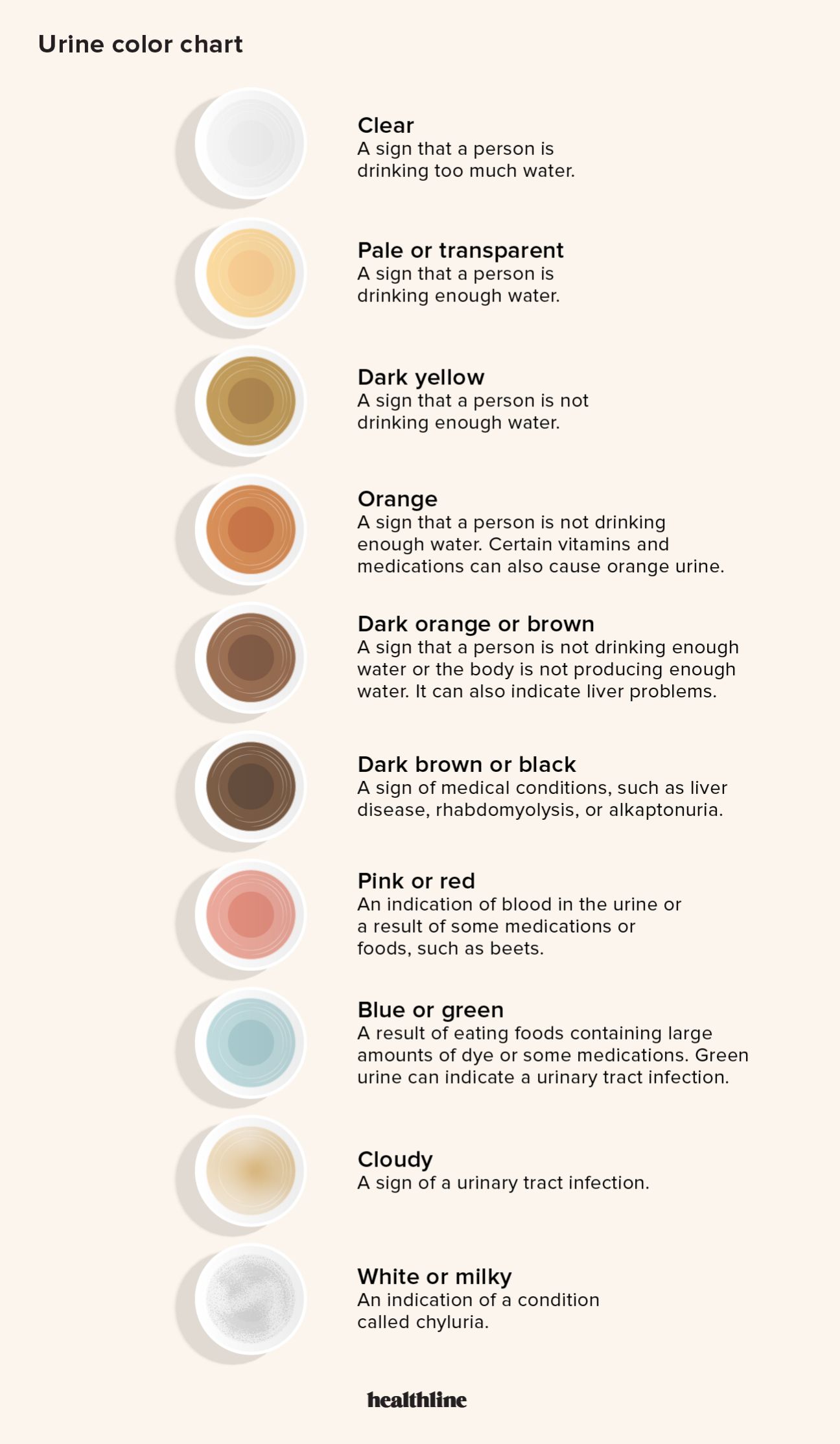
Normal Urine Characteristics:
- Color: Ranges from pale yellow to deep amber, influenced by hydration levels.
- A very well-hydrated person will have clear urine color, while a dark golden color can be due to dehydration.
- Normal urine is often a pale yellow color due to urochrome, a pigment produced by the breakdown of hemoglobin.
Abnormal Colors:
- Red:
- Presence of Red Blood cells or Hemoglobin.
- Or if the person is consuming red-pigmented food like Beet Root.
- Hematuria: Presence of RBCs.
- Causes: Kidney and other urinary tract infections or stones, kidney inflammation or injury, prostate problems.
- Hemoglobinuria: Presence of hemoglobin in urine.
- Causes: Malaria, typhoid, yellow fever, or hemolytic jaundice.
- Causes: Malaria, typhoid, yellow fever, or hemolytic jaundice.
- White or Milky:
- Also known as chyluria, indicates the presence of lymph in urine.
- Most commonly associated with the parasitic infection Wuchereria Bancrofti, but can also have non-infectious causes.
- Causes: Trauma, congenital lymphatic malformation (e.g., lymphatic-urinary fistula), post-surgery (e.g., nephrectomy), congenital stenosis of thoracic duct.
- Dark Brown or Black:
- Alkaptonuria, or black urine disease.
- Alkaptonuria, or black urine disease.

- Clarity: Normally clear.
- Cloudiness might indicate the presence of mucus, cells, or microbes as in UTIs.
- Foamy: Excessive bubbles might indicate protein in the urine, a potential sign of kidney disease.
- Odor: Mild odor due to ammonia.
- In conditions like liver disease, it may smell musty.
- Foul smell indicates bladder infection.
- Mousy smell in the case of Phenylketonuria.
- Sweet smell in the case of diabetes mellitus.
- Another genetic disorder makes it smell like maple syrup.
- Volume: About 800 to 2,000 milliliters per day for adults, varying with fluid intake.
- Polyuria: Urinary volume >2000ml/24 hrs.
- Causes: Diabetes mellitus, diabetes insipidus, chronic renal failure, and diuretic therapy.
- Oliguria: Urinary volume <400ml/24 hrs.
- Causes: Febrile states, acute glomerulonephritis, congestive cardiac failure, or dehydration.
- Anuria: Urinary output <100ml/24 hrs or complete cessation of urine output.
- Causes: Acute tubular necrosis, acute glomerulonephritis, and complete urinary tract obstruction.
- Causes: Acute tubular necrosis, acute glomerulonephritis, and complete urinary tract obstruction.
- Polyuria: Urinary volume >2000ml/24 hrs.
- pH: Usually slightly acidic, ranging from 5.6 to 7.
- Acidic urine:
- Causes: Large intake of meat & certain fruits (cranberries), metabolic & respiratory acidosis.
- Alkaline urine:
- Causes: Vegetarians, metabolic & respiratory alkalosis, urinary tract infection by urea-splitting bacteria which split urea to ammonia (alkaline).
- Acidic urine:
Also Read : Navigating Necrosis : Investigating its Cause, Classification, Consequences & Treatment
Also Read : WHO updates policy for the use of lateral flow urine lipoarabinomannan assay (LF-LAM) for diagnosing active tuberculosis in people living with HIV
Pingback: Covishield : Do You Really Need To Worry If You Have Taken It? - Med College Darshan